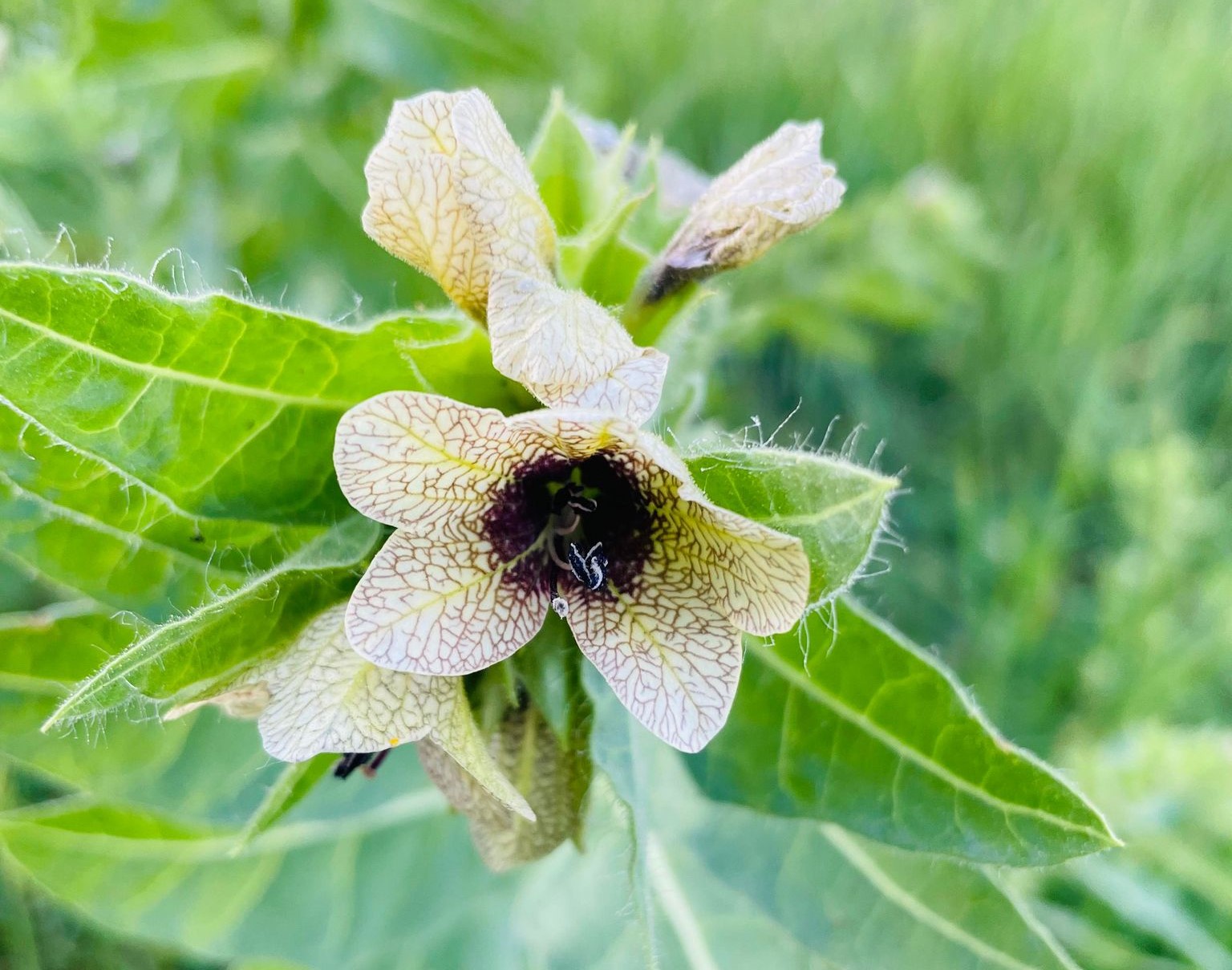A toxic weed with a nasty smell and fast-growing seeds is making unwanted appearances in Cochrane this summer.
Black henbane has been spotted in several areas around town and officials are urging caution when dealing with it.
“We’ve had about 30 calls about black henbane since the start of June,” says Trish Kluane, manager of parks and open spaces for the Town of Cochrane. “It’s showing up on both public and private land.”
Black henbane thrives in disturbed soil, which makes new developments and construction zones common hotspots.
The plant is toxic to both humans and animals. “All parts of the black henbane plant are considered poisonous when ingested.”
Because it spreads through seeds, early removal is critical. “One single plant can produce about half a million seeds in a season,” Kluane says. “And those seeds can remain viable in the soil for up to four years.”
The best way to control it is to remove the plant before it goes to seed. “Hand pulling is effective, just make sure to wear long sleeves and gloves, since skin contact can cause irritation.”
If the plant has gone to seed, Kluane recommends clipping off the seed heads first, bagging them, then digging out the rest of the plant.
All plant material should go in the garbage, not in compost or green bins.
RELATED STORIES:
It gives off a foul odour often compared to rotting garbage, which typically keeps animals away. But pets and young children may still be at risk if they decide to investigate.
“If a child or animal ingests it, contact poison control,” says Kluane. “There are symptoms, but it depends on the individual. It’s always best to be cautious.”
Residents are asked to report the weed if they spot it on public land. “We’d prefer to get a call so we can track it and send out crews.”
If it’s on private property, it’s the responsibility of the landowner to remove it safely.
Black henbane isn’t new to Alberta. “It was originally introduced to North America from the Mediterranean in the 17th century, It was brought in as an ornamental and medicinal plant.”
It’s now classified as a noxious weed under the Alberta Weed Control Act because of its ability to spread quickly and take over natural areas.
“It’s very common, but it’s easy to manage if people take the right precautions,” Kluane says. “And if anyone spots it on town land, let us know so we can handle it.”
